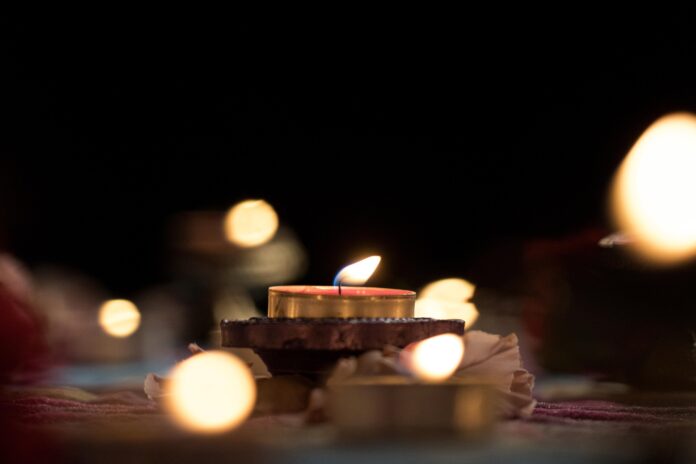Indian Classical Music History
Indian classical music has a rich history that dates back thousands of years. Its unique style and sound have captured the hearts of many over time, but there are few people as influential in this genre as Tansen and Deepak Raag.
These two names are synonymous with Indian classical music, and their contributions to the field have been immense. Tansen is considered one of the greatest musicians in Indian history.
He lived during the reign of Emperor Akbar in the Mughal Empire, around 450 years ago. His exceptional talent earned him a place as one of Emperor Akbar’s top court musicians, where he became an icon for his innovative compositions and performances.
Tansen is credited with creating new ragas that not only enhanced the existing repertoire but also brought new dimensions to Indian classical music. He was known for his ability to blend different ragas seamlessly together, creating new harmonies that had never before been heard.
Tansen’s legacy endures today, inspiring countless other musicians who strive to follow in his footsteps. Another significant figure in Indian classical music is Deepak Raag.
This raga is often considered one of the most powerful and evocative ragas in Indian classical music due to its association with fire and light. It invokes feelings of passion, intensity, and transformation through its intense melodies.
Deepak Raag has been performed by some of India’s finest musicians throughout history, each adding their personal flair to this timeless raga. It still remains popular among audiences today because it can evoke deep emotions from within listeners.
Tansen’s contribution paved the way for modern-day musicians who are inspired by his groundbreaking innovations while Deepak Raag continues to inspire audiences today with its intense melodies. Understanding these two figures’ impact on Indian classical music will give you an appreciation for how this genre has evolved over time into something truly remarkable.
Who is Tansen?
Tansen, born as Ramtanu Pandey, was a legendary musician who lived during the 16th century. He was born in a small village in present-day Madhya Pradesh and grew up surrounded by music. His father Mukund Misra was a famous poet and musician, and he passed on his love for music to his son.
Tansen’s family belonged to the Gwalior gharana of classical music. At an early age, Tansen left home to learn music from some of the greatest teachers of his time.
He studied under Swami Haridas, who was also the teacher of Mughal emperor Akbar. Tansen’s talent soon caught Akbar’s attention, and he became one of the most important musicians in the Mughal court.
Tansen’s contributions to Indian classical music are immense. He created several new ragas and composed many songs that are still popular today, such as “Miyan ki Malhar” and “Darbari Kanada”.
His mastery over different musical styles, such as dhrupad, khayal and tarana, made him one of the most versatile musicians of his time. He also wrote several books on music theory that are still studied today by aspiring musicians.
A Musician in Mughal Court
Emperor Akbar was known for his love for music, art and culture. He had gathered some of the most talented musicians from all parts of India to perform at his court. When Tansen joined Akbar’s court as a musician in 1556 AD, he quickly rose up through ranks due to his exceptional talent.
Tansen became one of Akbar’s closest advisors on matters related to music. The emperor often consulted him for advice on musical compositions and performances.
Together they developed a new style of Indian classical music that blended elements from various regional styles. Tansen’s popularity as a musician was not limited to the Mughal court.
He traveled extensively across India and performed for audiences everywhere. His reputation as a musician was such that even the great musician Baiju Bawra, who was his contemporary, could not match his skills.
Contributions to Indian Classical Music
Tansen’s contributions to Indian classical music are numerous. He created several new ragas and composed many songs that are still popular today, such as “Miyan ki Malhar” and “Darbari Kanada”. His mastery over different musical styles, such as dhrupad, khayal and tarana, made him one of the most versatile musicians of his time.
Tansen is also credited with developing the concept of raga-dari, which refers to the way a raga is developed in performance. He introduced several new techniques in singing, such as gamakas (ornaments), meend (glides) and murkis (flurries), which are still used by musicians today.
In addition to his contributions as a musician and composer, Tansen also wrote several books on music theory that are still studied today by aspiring musicians. His legacy has had a lasting impact on Indian classical music and continues to inspire generations of musicians even today.
What is Deepak Raag?
If you’re a fan of Indian classical music, you’ve probably come across the term “raag” before. A raag is a melodic framework used in traditional Indian music to create specific moods and atmospheres. One of the most famous raags is Deepak Raag, which is associated with fire and light.
The Significance of Deepak Raag in Indian Classical Music
Deepak Raag is often used in raga-based concerts, also known as “raga mehfils,” and has a special significance in the world of Indian classical music. It’s considered to be one of the most challenging raags to perform due to its complex structure and unique characteristics.
Characteristics and Performance of Deepak Raag
One of the defining characteristics of Deepak Raag is its association with fire and light. This association is reflected not only in the name (“Deepak” means lamp or light) but also in the way it’s performed.
The notes are played at a rapid pace with intricate patterns reminiscent of flickering flames. Deepak Raag typically starts out slowly, gradually building up momentum until it reaches an intense climax.
There are several variations within this raag that allow musicians to develop their own interpretations and improvisations. When performed correctly, Deepak Raag can evoke powerful emotions in both performers and listeners alike.
It’s said that listening to this raag can help purify one’s mind and soul while invoking feelings of passion, inspiration, and energy. Overall, Deepak Raag plays an important role in preserving India’s rich cultural heritage by showcasing the beauty and complexity of traditional Indian classical music.
Historic Facts
The Mughal Empire’s Influence on Music
Tansen’s time was during the Mughal Empire, a time when Indian classical music experienced significant changes. Akbar, the emperor at the time, was a patron of music and encouraged musicians to perform in his court.
However, he also invited Persian musicians to his court, which led to a fusion of Persian and Indian musical styles. The influence of Persian music can be seen in some of Tansen’s compositions.
For example, Tansen combined elements of Persian melodies with Indian ragas to create new compositions. The Mughal Empire’s influence on music is evident even today in many Indian classical music pieces.
Tansen’s Relationship with Emperor Akbar
Tansen had a close relationship with Emperor Akbar and served as one of his most esteemed musicians. He was known for his exceptional talent and frequently performed for the emperor and his court.
Additionally, Tansen played an important role in promoting Indian culture through music. He composed several ragas that were inspired by nature and Hindu mythology.
His compositions were considered a way to connect with spirituality and evoke emotions. Emperor Akbar recognized Tansen’s contribution to Indian culture and honored him with the title ‘Mian’ (meaning respected) after his death.
Other Notable Musicians during this Time Period
In addition to Tansen, there were several other notable musicians during this time period who contributed significantly to the development of Indian classical music. Some of these musicians include: – Baiju Bawra: A musician who was known for his exceptional vocal abilities.
– Swami Haridas: A musician who taught both Tansen and Baiju Bawra. – Amir Khusro: A musician who is credited with creating several new musical forms like qawwali.
These musicians, along with Tansen, played a vital role in shaping Indian classical music and paving the way for future generations of musicians. Their contributions have left a lasting impact on Indian music even today.
Conclusion
The Enduring Legacy of Tansen and Deepak Raag
Tansen and Deepak Raag are two of the most important figures in the history of Indian classical music. Tansen’s contributions to the development of new ragas, his role in promoting Indian music in the Mughal court, and his relationship with Emperor Akbar are all integral parts of Indian music history.
Similarly, Deepak Raag has a lasting significance that continues to be felt today. Its association with fire and light, as well as its unique performance style that evokes intense emotions, make it a standout raga among others in the classical music canon.
The impact of these figures can still be felt today. Modern-day musicians continue to study their works and incorporate their techniques into their own compositions.
Listeners around the world appreciate their contributions to Indian classical music and recognize them as influential pioneers who helped shape this rich cultural tradition. Overall, Tansen and Deepak Raag are not only important historical figures but also symbols of India’s enduring cultural heritage – a legacy that continues to inspire countless people around the world.



